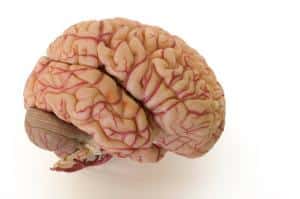Artificial stimulation of the brain, by precise and non-invasive means, is one of the main goals in brain research and treatment. This is the reason for the growing enthusiasm in the scientific community for the latest successes in the field, one of the main of which is the activation of neurons using ultrasound waves

Artificial stimulation of the brain, by precise and non-invasive means, is one of the main goals in brain research and treatment. This is the reason for the growing enthusiasm in the scientific community for the latest successes in the field, one of the main of which is the activation of neurons using ultrasonic waves (Neuromodulation). This approach may complement and even replace the existing brain treatments, which require the surgical insertion of electrodes through the skull and therefore involve risk. The ability to influence nerve cells using ultrasound waves has been known for many years, but in recent years there have been dramatic developments in this ability and recently the ability to create artificial (fictitious) sensations in subjects by direct brain stimulation has even been demonstrated. However, since these are very complex systems and phenomena, there is still much that is hidden over the visible, especially in regards to the mechanisms that enable the activation and deactivation of neural networks.
A new line in this regard comes from the Technion, the Faculty of Biomedical Engineering and the Russell Berry Institute for Nanotechnology. A study conducted by professors Shai Shem and Eitan Kimmel and doctoral student Michael Flexin may improve our ability to understand and apply the phenomena related to the effect on the brain (neuro-modulation) using a focused beam of ultrasound. In the study, published in the new issue of the journal eNeuro, a new theoretical framework is proposed that explains a large variety of experimental findings in the field.
From the aforementioned study, surprisingly, it appears that the way the ultrasound is activated dramatically affects the interaction between the wave and the nerve cell, and as a result, certain ultrasound patterns will affect different types of nerve cells differently. The means used in this study make it possible to predict the complex phenomena obtained in neural networks in the brain, which are composed of different types of nerve cells.
The research group developed NICE - a biophysical model that explains the effect of ultrasound waves on the brain. When ultrasound waves hit the cell, the cell membrane begins to vibrate, a vibration that leads to charging the membrane with an electrical charge. The longer the duration of the vibration, the more charge accumulates in the membrane, leading to electrical excitation (activation) of nerve cells. Now the group shows that when the ultrasonic wave is activated in short pulses, a selective excitation of cells of the type that inhibits network activity will occur. The result: paralysis of activity in the neural network. This is the first explanation for this phenomenon, which was recently observed experimentally by researchers at Harvard University.
According to Prof. Shoham, "So far, a very good match has been found between the prediction of the NICE model and the results of experiments in the field, so there are two important pieces of news here: further confirmation of the predictive power of the leading theory in the field, and the opening of a new ability to engineer ultrasound patterns that will individually activate different populations of Nerve cells - activation that has so far only been possible through very invasive means."
The new research may lead to significant breakthroughs in the field of non-invasive medical treatment of neurological diseases. "To a large extent, the brain is still a locked box," says Prof. Shoham, "and it is possible that ultrasound waves may be a key to this box. Now, for example, as part of a collaboration with Insightek and Prof. Itamar Kahan from the Rapaport Faculty of Medicine, and using MRI technology, we are testing for the first time at the Technion the effect of ultrasound on brain activity, so that we can monitor it without the need for electrodes and other invasive means."

5 תגובות
I guess the good old aluminum cap won't help in this case...
A remote can help if you are at home, in front of the TV. Not if you're walking in a mall, or on the street, or driving a car. Regarding an ad blocker, the mall management can (for example) ask you to stop the ad blocker, or you will not be allowed to enter it.
There is already a solution for projecting advertisements directly to Cortes
It's called a sign
Lorem,
You can always install an ad blocker.
At first it will be used to treat degenerative diseases of the brain, then progress will be made and they will be able to treat depression using the technology. The real explosion will of course happen when they find a way to project advertisements directly into the cortex of people on the street.